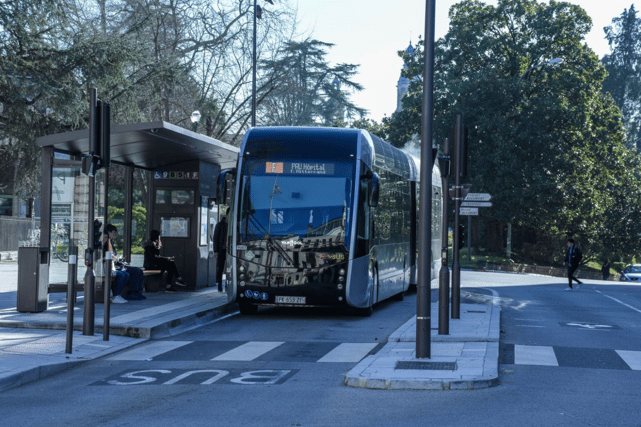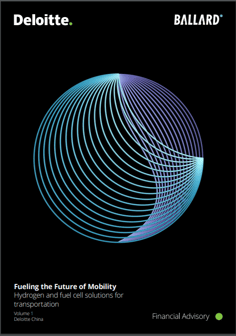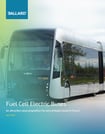For those in charge of transit bus fleets, the pressure to adopt a zero-emission (not merely low-emission) technology is intense.
Governments are setting zero-emission mandates and offering support for the transition. But transit authorities know the decisions they make now will be the ones they have to live with for decades to come.
For zero-emission electric public transit, the choice comes down to two technologies: battery-electric buses (BEBs) and fuel-cell electric buses (FCEBs).
So how should a transit authority make the choice? At first glance, battery-powered buses are attractive. Capital costs—on a per-bus basis—are lower.
But that’s not the full picture.
In today’s article, we’ll share how the city of Pau’s public transport authority followed a strategic approach in determining which buses made the most sense for their fleet.
Rather than looking at capital costs alone, they prioritized key performance requirements in their evaluation.
Why the city of Pau chose a FCEB fleet
By mandate, Pau must now choose zero-emission transit vehicles for all new acquisitions. When evaluating between BEBs and FCEBs, the city’s approach took range, local geography, and climate into account.

Based on these performance criteria, the decision was clear: the same routes could be served by approximately 40% fewer FCEBs than BEBs, and a far simpler infrastructure.
The discovery?
- 14 BEBs—plus two charging stations, or
- 8 FCEBs, with a single refueling depot
That realization—that they could serve their needs with far fewer FCEBs, and a simpler support infrastructure—transformed their financial evaluation. As a result, Pau became the first city in France—and the world—to deploy Van Hool ExquiCity tram-buses for a full bus and rapid transit system.
The interior of the Fébus buses was designed by Courrèges, and is powered by Ballard’s FCveloCity®-HD fuel cell module. Since their launch, the tram-buses have won a number of awards including:
- the top award for ‘Innovation Linked to Sustainable Development’ by the national jury of the Marianne d'Or.
- the Energy Transition Trophy in the "Sustainable Transport" category.
- ‘Grand Award Bus’ and ‘Ecology’ awards at BusWorld 2019, being crowned the “best bus in the world.”
 Interior of new Pau Fébus fuel cell electric bus
Interior of new Pau Fébus fuel cell electric bus
FCEB advantages go beyond longer range capability
Hydrogen fuel cells are well known for their range advantage over rechargeable batteries. For Pau, additional factors were taken into account:
- Additional range for special events—with FCEBs, they could easily extend routes whenever they needed - such as for special events. This wasn’t possible with a BEB solution.
- Continued operation even in grid failure—if the electrical grid fails, they can continue to operate their FCEBs. Conversely, BEBs cannot be recharged when the grid is down.
- High performance in heat and cold—FCEBs maintain their performance even in extreme heat and cold. Conversely, BEB range and climbing power drops because of the need to heat and cool the passenger cabin.
Pau’s FCEB fleet is only one component of their overall city plan to promote public transport over passenger cars, and transform the city’s public space.
Lucie Kempf, Project Manager at Investissements Patrimoniaux du Syndicat mixte des transports urbains Pau Bearn Pyrénées Mobilités, shared this sentiment about the launch of Pau’s new fuel cell electric buses:
“Yes WE DID IT! Today Fébus is already a great success as it has already reached 74,000 km in commercial operation.
This success was possible thanks to the exemplary involvement of all the project partners. I would like to say a special thanks to Ballard for its responsiveness and commitment.
The story continues. The year ahead will be very exciting as we now have to demonstrate the high potential of hydrogen mobility. It's a challenge all partners are ready to tackle. I know that Ballard will always be with us for this new challenge."
Learning from Pau’s leadership
Other cities in France can learn from Pau’s long-term, total-systems view. France, as a nation, is well positioned to make the transition to FCEB-based public transit:
- Governments in France are including hydrogen in their energy transition plans, emphasizing hydrogen mobility in a number of regions.
- Hydrogen is widely available in France, and the country plans to begin producing green hydrogen through renewable energy in the coming years.
- There is a growing experience base with FCEBs, and a wider selection of bus designs available to cities and bus operators.
- Over €90 million of government funding is in place in France to support FCEB acquisitions, and the national will strongly supports addressing climate change.
There is additional support and encouragement from AFHYPAC’s (Hydrogen Mobility France) 1000 Bus Plan that calls for the deployment of 1,000 fuel cell electric buses by 2023.
5 reasons to include FCEBs in upcoming tenders
When choosing a zero-emission transit solution, agencies often look at per-bus capital costs first. But taking a step back to examine the system-wide cost structure can provide better insight.
For those who are choosing a zero-emissions technology, here are five reasons why FCEBs should be included in any city or region’s tenders:
1. Longer range, greater route flexibility: FCEBs have a range of 450km, and can be driven on long routes and steep grades.
2. Proven performance and reliability: FCEBs perform exceptionally well in a variety of weather and route conditions around the world. Ballard-powered FCEBs have achieved over 30,000 service hours in London buses from 2011 to 2020.
3. Scalability of hydrogen infrastructure: Hydrogen refueling stations don’t require any major utility upgrades. Their footprint is similar to CNG refueling stations, and operators can scale up as the FCEB fleet grows.
4. Life-cycle sustainability: Fuel cells don’t have the serious supply chain risks of lithium-ion batteries. They are easily recycled—at the end of a fuel cell’s service life it’s refurbished and put back into service.
5. Competitive total cost of ownership: A recently published Ballard-Deloitte report showed that the total cost of ownership of an FCEB will fall by more than 50% in the next 5 to 7 years. Today, fuel cell electric buses offer the most competitive zero-emission transit solution - on a TCO basis - in regions where low cost renewable hydrogen is available.
Conclusion
Depending on the routes served, local geography and climate conditions, battery buses are seriously limited. In fact the superior performance of hydrogen fuel cells means a region needs fewer FCEBs to serve the same routes—resulting in system-wide cost savings and efficiencies.
When evaluating the choice of zero emission bus technology it is important to consider operation requirements and compare TOTAL cost of ownership including the infrastructure cost, additional vehicle requirements and impacted operational costs like refueling time and parking space.
The city of Pau showed leadership and careful thinking when evaluating the best zero-emission bus solution for their needs. The rest of France is ready to follow in their footsteps by making a large scale transition to fuel cell electric buses.






